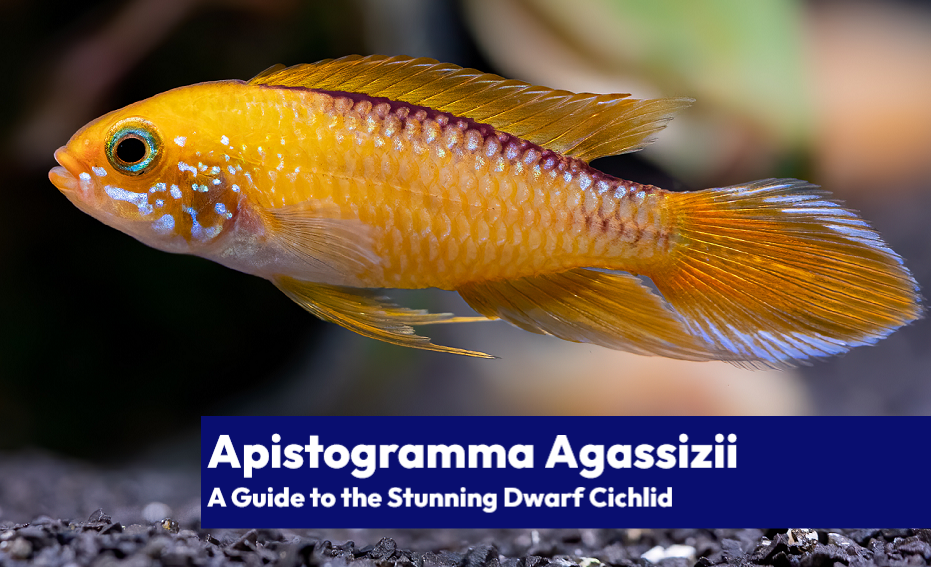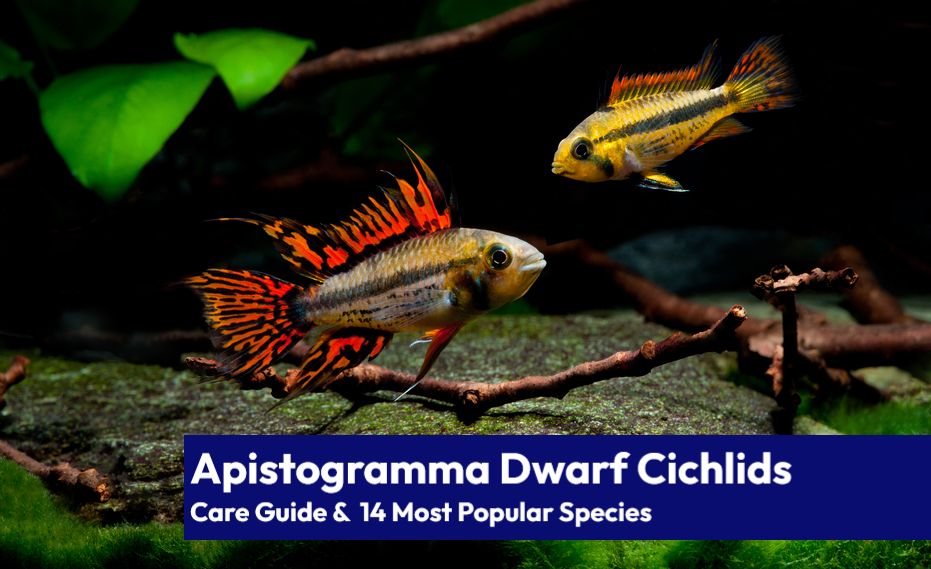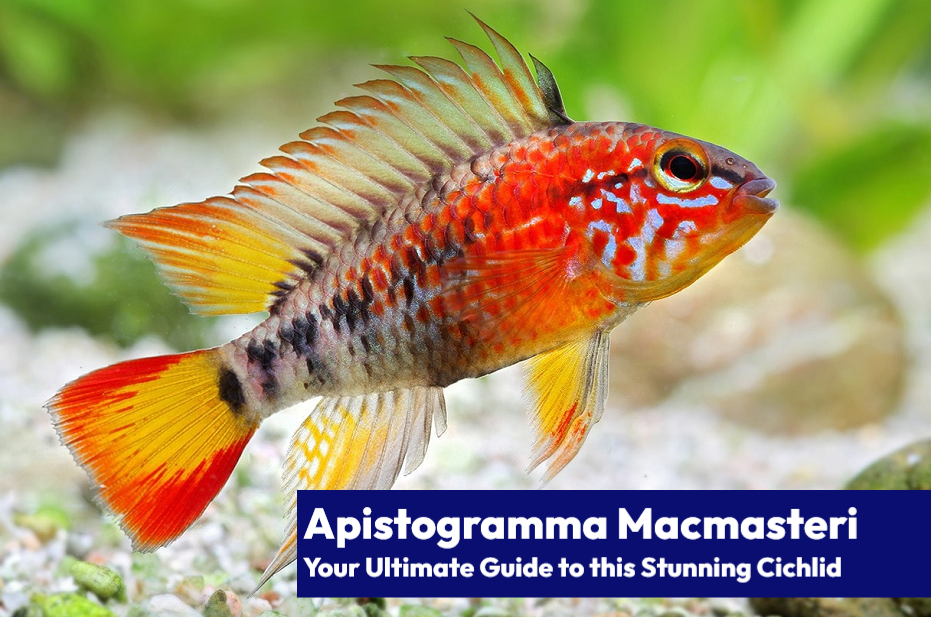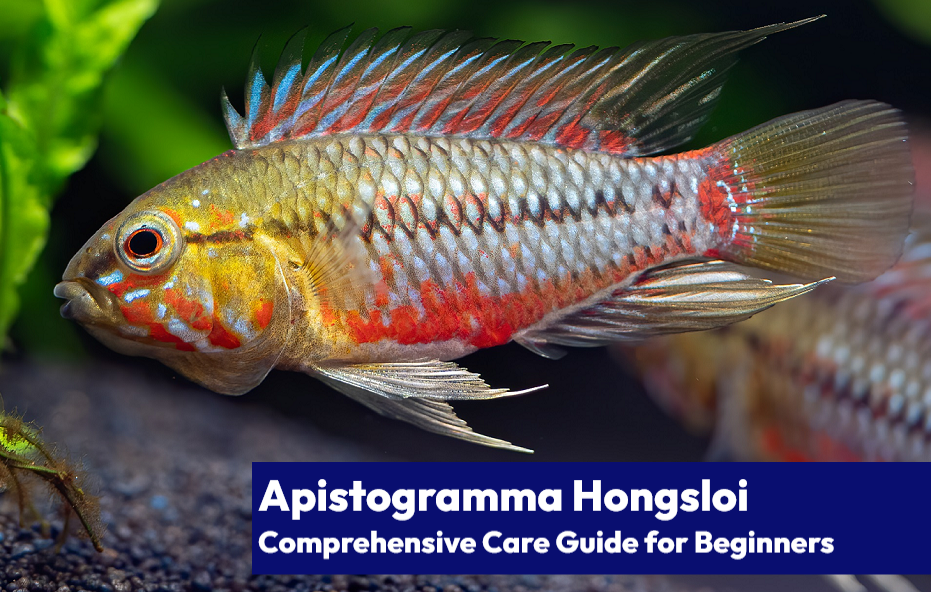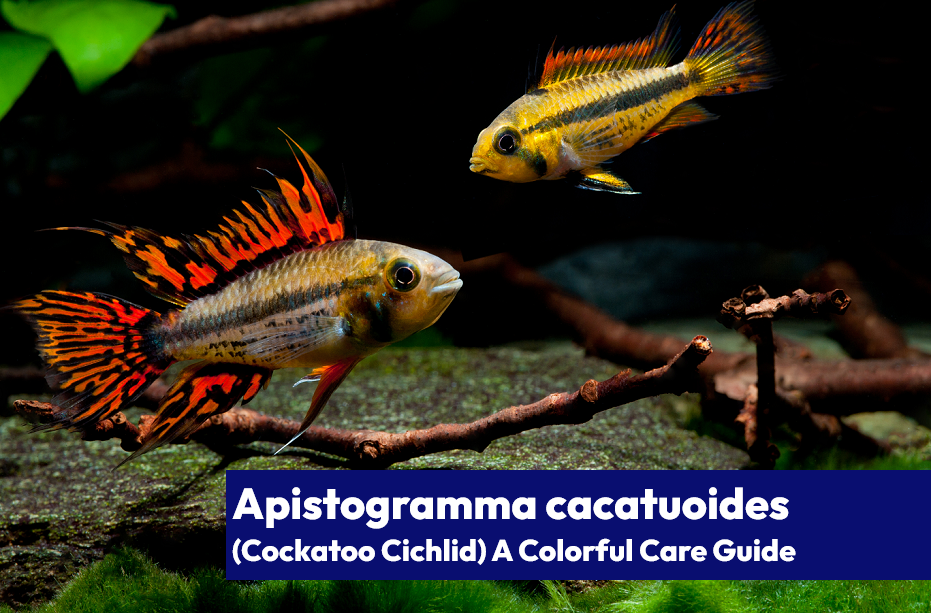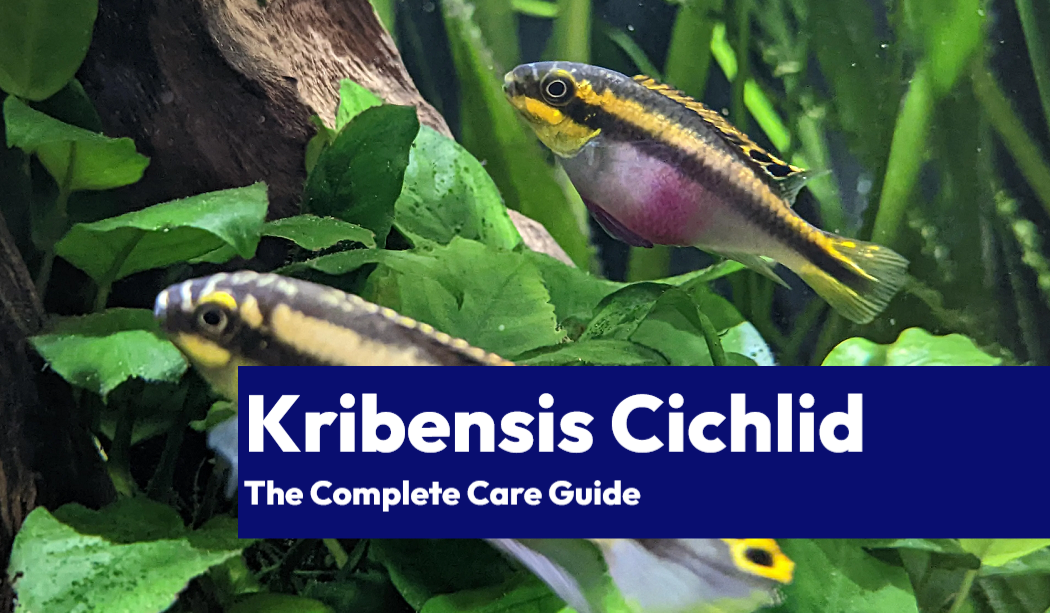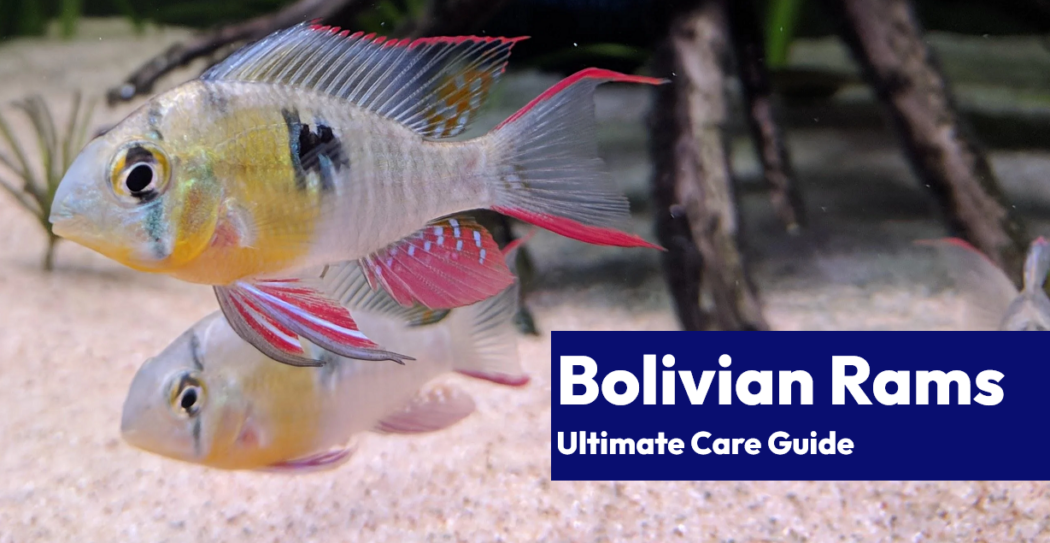Let me tell you about my new best fish friend: the Apistogramma agassizii. These little swimming gems are going to steal your heart like they did mine. So buckle up, aquarium enthusiasts, as we embark on this deep dive into the colorful world of the A. agassizii!
The Agassiz’s Apisto A-List: A Snapshot
Before we get carried away, here’s a quick overview of what we’re dealing with:
| Care Data | Apistogramma agassizii |
|---|---|
| Type | Freshwater Dwarf Cichlid |
| Adult Size | 2.4-3.2 inches (6-8 cm) |
| Tank Size | 20 gallons (76 liters) minimum |
| Optimal Temperature | 72-82°F (22-28°C) |
| General Hardness | 5-12 dGH |
| Carbonate Hardness | 2-6 dKH |
| Optimal pH range | 6.0-7.5 |
| Diet Type | Omnivore |
| Feeding Frequency | 1-2 times daily |
| Water Change Frequency | Weekly or bi-weekly |
| Can Breed In Captivity? | Yes |
| Number of Fry | 50-100 |
| Spawning Type | Cave Spawner |
| Native Range | South America (Brazil, Colombia, Peru) |
| Temperament | Peaceful |
| Schooling/Shoaling Fish | No |
| Known to Jump Out of Tank | Rarely |
| Average Cost (USD) | $8-25 per fish |
A Palette of Color: Introducing the Apistogramma agassizii

These dwarf cichlids are known for their vibrant coloration and stunning beauty. The Apistogramma agassizii sports a dazzling mix of yellows, blues, and reds that stand out like a beacon in your aquarium. And the best part? They’re just as beautiful on the inside as they are on the outside, with their gentle temperament and peaceful nature.
Now let’s talk about the birds and the bees—or in this case, the males and the females. Sexual dimorphism is a real thing with these fish, and it’s quite easy to tell them apart. Males are larger and boast more vibrant colors and elongated fins, while females are smaller and less flashy. But don’t worry, ladies, you’re still looking fabulous! 😘
The Body: An In-Depth Look at the Apistogramma agassizii
The body of an Apistogramma agassizii is laterally compressed, like a tiny, squashed football. This allows them to navigate the nooks and crannies of their natural habitat with ease. Their body is adorned with a lateral line, which helps them detect movement and pressure changes in the water. Handy, huh?
💡 Fun Fact: Did you know that the Apistogramma agassizii is named after Louis Agassiz, a Swiss-American zoologist who studied fish in the 19th century? Talk about leaving a legacy!
Size Matters: The Growth and Development of the Apistogramma agassizii
The average adult size of the Apistogramma agassizii is 2.4-3.2 inches (6-8 cm) in length. Males typically grow larger than females. Growth is steady and relatively quick, with juveniles reaching adult size within 6-8 months, depending on factors like diet and water quality.
The optimal tank size for an Apistogramma agassizii is at least 20 gallons (76 liters) to accommodate their swimming needs and territorial behavior. This is especially important if you plan on keeping a school of them or adding some tankmates. Bigger is always better, so if you can spring for a larger tank, your fish friends will thank you!

The Longevity Chronicles: Apistogramma agassizii Lifespan
The average lifespan of an Apistogramma agassizii ranges from 3-5 years. Proper care, including a balanced diet and optimal water parameters, can help ensure your fish reach their maximum lifespan.
The longest recorded lifespan for an Apistogramma agassizii in captivity is around 6 years. This is not common, but it does illustrate the potential for longevity when these fish receive the best care possible.
Water You Waiting For? Let’s Talk Parameters
Apistogramma agassizii thrive in water with a pH range of 6.0-7.5, a general hardness of 5-12 dGH, and a carbonate hardness of 2-6 dKH. Keep the temperature between 72-82°F (22-28°C) for optimal health and happiness.
Setting the Stage: Equipment Essentials for the Apistogramma agassizii
To create an ideal environment for your Apistogramma agassizii, you’ll need to invest in the right equipment. For heating, a 50 watt adjustable heater is perfect for a 20 gallon (76 liter) tank. As for filtration, a sponge filter or a gentle canister filter will keep the water clean without causing excessive water flow.
LED lights with a timer are recommended to simulate a natural day/night cycle and encourage plant growth. Choose a light that matches the length of your tank, and set the timer for 8-10 hours of light per day. Don’t forget about water conditioners and mineralizers to ensure optimal water parameters for your fishy friends!

Creating the Perfect Playground: Habitat Requirements
An ideal habitat for the Apistogramma agassizii consists of a sandy or fine-grained substrate and plenty of hiding spots, such as caves and rockwork. Add some driftwood and leaf litter to create a more natural environment, and consider using live plants that can tolerate the lower pH levels, such as Java Fern, Anubias, Amazon Swords, Cryptocoryne, and Vallisneria.
💡 Pro Tip: The dark-colored substrate will help bring out the vibrant colors of your A. agassizii, making them stand out even more!
Feeding Frenzy: The Optimal Diet for the Apistogramma agassizii
Your Apistogramma agassizii will thrive on a varied diet, including:
- High-quality pellets or flakes
- Brine shrimp
- Daphnia
- Bloodworms
- Mysis shrimp
- Grindal worms
- Crushed peas
Feed them once or twice daily, offering just enough food that they can consume within a few minutes. Overfeeding can lead to poor water quality and health issues, so it’s essential to monitor your fish’s eating habits.
The Good, the Bad, and the Fishy: Ideal and Not-So-Ideal Tankmates
Apistogramma agassizii get along well with a variety of tankmates, including:
However, not all tankmates are created equal. Avoid keeping Apistogramma agassizii with larger, aggressive fish or fin-nippers, such as:
- Cichlids
- Oscars
- Arowanas
- Tiger Barbs
- Red Tail Sharks

The Birds and the Bees: Breeding Apistogramma agassizii
Breeding Apistogramma agassizii can be both fascinating and rewarding. To encourage spawning, maintain optimal water parameters and provide a protein-rich diet. Providing plenty of hiding spots and visual barriers, such as caves and plants, is crucial for successful breeding. The female will lay her eggs inside a cave or crevice, and the male will fertilize them.
Once the eggs are fertilized, the female will guard them while the male patrols the territory. Eggs will usually hatch within 3-4 days, and the fry will become free-swimming after another 5-7 days. At this stage, you should feed the fry with infusoria or newly hatched brine shrimp until they’re large enough to accept other foods.
💡 Important: If you’re serious about breeding Apistogramma agassizii, consider setting up a separate breeding tank to ensure the best conditions for the eggs and fry.
Disease Control: Common Illnesses in Apistogramma agassizii
Like any other fish, Apistogramma agassizii can be susceptible to several common illnesses, including:
To prevent disease, maintain optimal water parameters, avoid overfeeding, and quarantine new fish before adding them to your main tank.
From the Amazon to Your Aquarium: Origin and Native Range
Apistogramma agassizii is native to the Amazon River basin, where they inhabit slow-moving, shallow waters with plenty of cover. They can be found in countries such as Brazil, Peru, and Colombia, often hiding among fallen leaves, plants, and rocks.

A Colorful Addition: Apistogramma agassizii in Community Tanks
Apistogramma agassizii can be a beautiful and engaging addition to a community tank, thanks to their stunning colors and intriguing behaviors. With proper care and attention, these fish will not only bring life to your aquarium but may also reward you with a fascinating breeding experience.
A Quick Dive Into Taxonomy
The Apistogramma agassizii is closely related to other dwarf cichlids in the Apistogramma genus, such as Apistogramma cacatuoides and Apistogramma borellii.
| Kingdom | Phylum | Class | Order | Family | Genus | Species |
|---|---|---|---|---|---|---|
| Animalia | Chordata | Actinopterygii | Perciformes | Cichlidae | Apistogramma | Apistogramma agassizii |
Wrapping Up: Apistogramma agassizii in a Nutshell
In conclusion, the Apistogramma agassizii is a beautiful, intriguing fish that can make an excellent addition to a community tank. By providing the right environment, diet, and tankmates, you can ensure your fish thrive and potentially even breed. Now you’re fully equipped to dive into the world of Apistogramma agassizii! 🐠
TL;DR:
- A. agassizii is a beautiful, colorful dwarf cichlid
- They prefer a tank size of at least 20 gallons with plenty of hiding spots
- Maintain optimal water parameters: 72-82°F (22-28°C), 3-15 dGH, 3-10 dKH, pH 6.0-7.5
- Feed a varied diet of live, frozen, and pellet foods
- Suitable tankmates include tetras, corydoras, and other peaceful fish
- Breeding is possible with proper care and a separate breeding tank
- Watch for common illnesses and maintain good water quality to prevent them

Tim Priest, a renowned aquarium expert with over 15 years of experience in aquatic gardening and fish education, is dedicated to helping enthusiasts create stunning and thriving aquatic environments. As the founder of LearnTheAquarium.com, Tim shares his wealth of knowledge, passion, and expertise through engaging articles, educational resources, and personalized advice.
Discover the secrets to creating captivating underwater landscapes and maintaining healthy aquatic ecosystems. Join Tim on an exciting journey and let your aquarium adventure begin!
